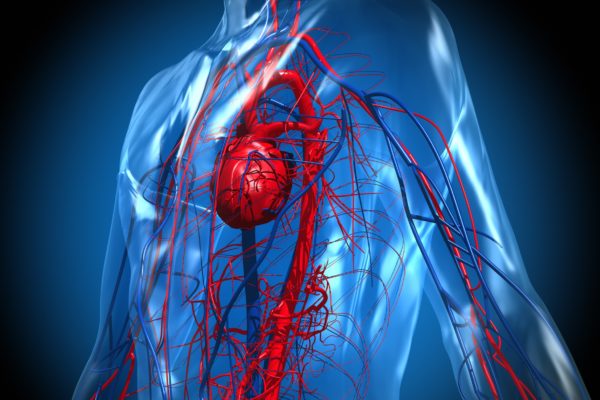Clinical picture
Melanoma is a type of cancer that develops from pigment-containing cells called melanocytes. It is the most aggressive type of skin cancer, and it is known to spread rapidly across the body. In women, they mostly occur on the legs, while in men they are most common on the back. But melanoma can also develop in parts of the body that rarely are exposed to sunlight, such as the mouth, the eye or the intestines. Because melanoma can spread so rapidly, early diagnosis is deemed as vitally important.
There are several types of melanoma, dependent on location and appearance of the tumour. Each type requires a specific therapy.
- Superficial spreading melanoma: this is the most common type of melanoma. Tumours grow mostly on the skin surface ‘and can grow quite large. Some of these tumours can be white or pink, these are known as amelanotic.
- Nodular melanoma: this type affects around 15 to 20% of all patients. Often it is a dark blue or black lump that grows quite fast and can become quite thick. Sometimes these tumours form lesions that can bleed. The outlook for this type of melanoma is less favourable.
- Lentigo maligna melanoma: this melanoma develops from a condition known as lentigo maligna, which is seen as a precancerous stage. Tumours take on an erratic shape and are usually brown or black. This type of melanoma often occurs in elderly people who have spent a lot of time in the sun during their lives.
- Acral lentiginous melanoma: a rare type of melanoma that mostly occurs in the palm of the hand, on the soles of the feet and on the ankles.
- Eye melanoma: melanoma that develops inside the eye.
- Mucosal melanoma: rare melanoma in mucous membranes in the mouth, nose, throat or eyelids. This can also occur in the rectum or the vagina.
In Belgium, 2,828 people were diagnosed with melanoma in 2015. It is the most rapidly growing cancer type in Belgium. Generally spoken, the outlook is quite good as long as the melanoma is detected at an early stage. Patients who are diagnosed with a stage I tumour have a 100% 3-year survival rate. This number drops to 17% if the patient is diagnosed in stage III.
Symptoms
When a mole or skin discolouration suddenly appears or changes shape, it can indicate melanoma. At the outset, such a spot can resemble an ordinary mole, but these spots can suddenly change shape or colour. Suspicious moles can be recognised in accordance with the ABCDE rule:
- Asymmetry: the spot is not symmetrical in shape
- Border: the spot does not have a well-defined edge
- Colour: the spot changes colours or is made up of different colours
- Diameter: the spot is larger than 6 mm across
- Evolving: the spot itches, bleeds or changes shape
Cause
There is no clear-cut cause for melanoma, but there are certain known risk-inducing factors.
- prolonged exposure to direct sunlight, for instance because of a profession that requires working out in the open
- prolonged exposure to UV-light such as solariums
- the number of times a patient has suffered sunburn
- having a skin type that is sensitive to sunlight
- having more than 100 moles or 5 restless moles
- hereditary factors
- having been treated with radiotherapy or light therapy
- having a compromised immune system due to medication
- having had skin cancer before
Diagnosis
When a GP detects a suspicious looking mole, they will direct the patient to a dermatologist or a plastic surgeon. In some cases, the GP will remove the mole himself and send it to a lab for further analysis.
The dermatologist will also remove the suspicious mole and an edge of healthy skin around it and have it analysed by a pathologist. If the mole proves to be melanoma, it is important to determine exactly which stage the cancer is in. There are five stages in melanoma:
- Stage 0: The tumour is only found on the skin surface. No spreading towards the lymph nodes.
- Stage I:
- Ia: The tumour is less than 1 millimetre thick and has not grown into deeper skin layers.
- Ib: The tumour is less than 1 millimetre thick but has grown into deeper skin layers, or the tumour is between 1 and 2 millimetres thick and has not penetrated into deeper skin layers.
- Stage II:
- IIa: The tumour is between 1 and 2 millimetres thick with a lesion, or between 2 and 4 millimetres thick without a lesion.
- IIb: The tumour is between 2 and 4 millimetres thick with a lesion, or thicker than 4 millimetre without a lesion.
- IIc: The tumour is thicker than 4 millimetre and has a lesion.
- Stage III:
- Cancerous cells are found in the lymph nodes.
- So-called satellite or in-transit metastases. Satellite metastasis can occur at the location the primary tumour was removed. In-transit metastases are located between the spot of the original tumour and nearby lymph nodes.
- Stage IV: The cancer has spread to other organs, most often the liver, lungs or brains.
When a specialist notices the patient has enlarged lymph nodes, they may recommend an ultrasound or puncture. When the cancer has spread into the lymph nodes or under the skin, specialists will look for spreading to other parts of the body, using a CT scan or PET-CT scan.
Treatment
Surgery is usually the first step in treating a melanoma. First, the tumour is removed, then during a second operation, both the scar and the surrounding skin are removed. In some cases, specialists opt not to perform surgery but to treat the patient with radiotherapy. This greatly depends on the location of the tumour and the overall health condition of the patient. If the tumour has spread, usually adjuvant treatment is administered. Perfusion or immune therapy are also possibilities.
When a patient has reached stage IV, the chosen treatment depends on the number of metastases, location and aggressiveness of the tumour. Targeted therapy and immunotherapy with BRAF and MEK inhibitors are also treatment options in advanced disease for patients who are eligible.
Additional information
Related articles

Clinical picture

Symptoms

Cause

Diagnosis

Treatment

Patient organisations

Links







